Scuba Diving Descent Speed: What You Need to Know!
Scuba diving is a thrilling and captivating activity that offers an incredible opportunity to explore the mesmerizing underwater world. Yet, diving poses certain risks that must be effectively managed to ensure a safe and enjoyable experience. One critical aspect of scuba diving safety involves comprehending issues relating to diving descent speed and the techniques required to maintain ideal respiratory efficiency and avoid conditions like hypercapnia and narcosis.
In this article, I will explain whether there’s a limit on how fast you can descend while scuba diving, describe why respiratory efficiency is a pivotal factor in safe diving, and how it can be influenced by the increased gas density experienced at greater depths.
Additionally, I will discuss practical tips and strategies that will help you maximize respiratory efficiency and promote a safer and more pleasant diving experience.
So, if you’re planning to go scuba diving or have an interest in learning more about diving safety and respiratory efficiency, keep reading to discover all the essential information you need to know about diving descent speed.
Is there a maximum limit on diving descent speed?
Many scuba divers wonder if there’s a maximum speed at which you can descend while diving. The answer is no, at least until you reach the extreme depths where High-Pressure Nervous Syndrome (HPNS) and compression arthralgia become a concern.
However, diving descent speed can have an effect with respect to excess levels of carbon dioxide (CO2) in a diver’s body. That, in turn, can cause issues with narcosis and hypercapnia.
What effects does diving descent speed have?
Diving descent speed influences how quickly the pressure surrounding you increases. The rate at which ambient pressure increases has three effects:
- The speed of CO2 pressure increase inside the body
- The time available to efficiently remove excess CO2
- Respiratory efficiency removing CO2 from the body
Put simply, diving descent speed determines how quickly you get to depth. As you get deeper, the pressure of CO2 in your body increases, and your ability to remove CO2 decreases.
A slower descent speed affords more time to remove excess CO2 from your body before:
- The pressure of CO2 in your body can spike to a level where it has negative effects on you.
- Removing CO2 becomes difficult due to impaired respiratory efficiency.
Diving descent speed and CO2
The level of CO2 in the body will rise when a diver exerts themselves prior to descending. If the diver is breathing harder than normal, they will start their descent with an elevated level of CO2 in their tissues.
As the diver descends to greater pressure, the pressure of CO2 dissolved inside their body will also increase. Consequently, higher levels of CO2 in the body cause hypercapnia and have a stronger narcotic effect.
Tips for reducing CO2 before the descent
Here are some practical tips for reducing CO2 before you descend to depth:
- Stay horizontal on the surface: Staying in a vertical position on the surface creates a pressure differential between your mouth and diaphragm. This increases your work of breathing and can lead to CO2 retention. Instead, lay back horizontally in the water to get your chest at the surface and breathe deeply.
- Perform a descent stop: It’s a good idea to briefly pause your descent at around 5m (16ft). Get into horizontal trim and neutral buoyancy to reduce your work of breathing. Breathe deeply and allow some time to catch your breath. This short stop permits excess CO2 to be removed from your body. Additionally, you can use this descent stop as an opportunity to equalize your ears and check yourself and your dive buddy for gas leaks.
- Don’t descend if you are breathless. An increased rate of breathing indicates that your body is trying to remove excess CO2. Do not descend and further increase the pressure of CO2 inside your body. Slow down your descent, or stop completely, if you feel breathless.
By following these three simple strategies, you can minimize the effects of CO2 when you reach the bottom. That, in turn, reduces your risk of narcosis and hypercapnia. Remember to always take it slow and stay safe, and enjoy your diving experience to the fullest!
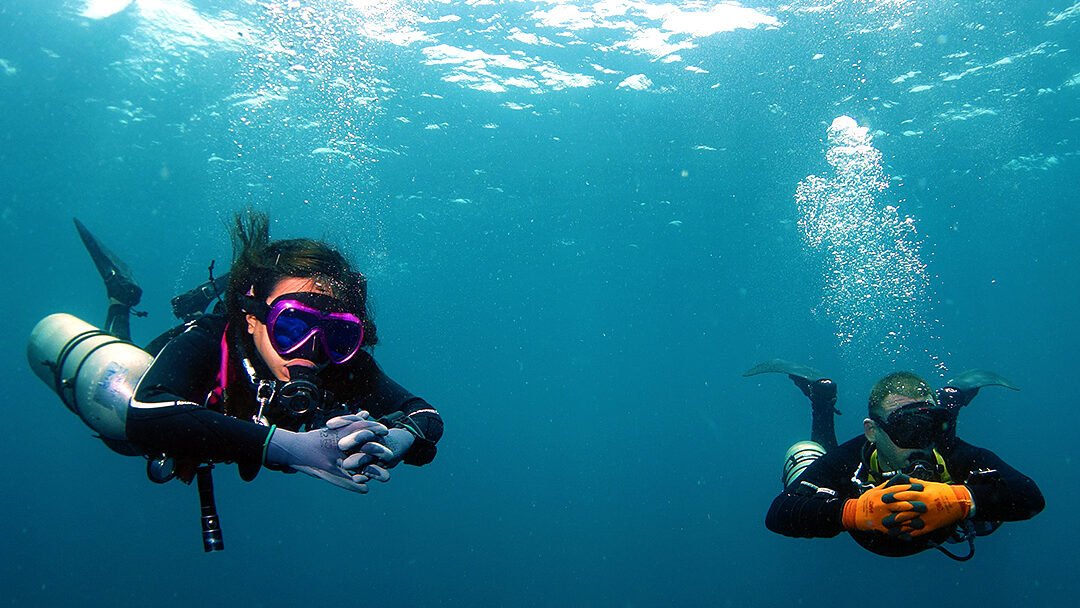
Diving descent speed and gas density
The density of our breathing gas increases as we dive deeper. Furthermore, it is understood that gas density is important in the efficiency with which we can remove CO2 from our bodies. Increasing gas density reduces our respiratory efficiency in exhaling CO2.
Consequently, it becomes increasingly harder to get rid of CO2 as the depth increases, even if you’re resting and using appropriate breathing techniques.
Rapidly increasing breathing gas density by descending faster reduces the amount of time available to remove excess CO2 easily and efficiently. Regrettably, this is not commonly taught in scuba diving certification courses.
DAN recommendations on gas density limit
Because of the proven link between CO2 retention and gas density in several scientific studies, the Divers Alert Network (DAN) has recommended maximum gas density limits when diving:
- Recommended maximum gas density: 5.2g/L
- Absolute maximum gas density: 6.2g/L
Diving descent speed determines how quickly our respiratory efficiency declines. On deeper dives, where gas density levels are near the limits, it is important to clear out excess CO2 before our bodies become inefficient in removing it.
Gas density can be moderated by the addition of helium to breathing gas mixtures. Diving gases that contain helium are known as ‘trimix’. Divers who suffer from narcosis and hypercapnia should consider a recreational trimix course.
The recommended and absolute gas density depth limits for common scuba diving gasses are calculated in the table below:
Scuba diving gas density table
Gas | Surface density | Recommended Max Depth | Absolute Max | O2 MOD |
Air | 1.29g/L | 30.4m | 38.1m | 56m |
Nitrox 28% | 1.3g/L | 30m | 37.7m | 40m |
Nitrox 32% | 1.31g/L | 29.8m | 37.4m | 34m |
Nitrox 40% | 1.32g/L | 29.3m | 30.9m | 25m |
Use this simple gas density calculator to determine the maximum recommended depth for whatever mixture you will use on a dive. Read more about understanding and applying gas density research.
Key points on diving descent speed and CO2
- Prevention is better than cure, so avoid over-exertion before diving and normalize respiration before descending
- The pressure of dissolved CO2 in the body increases as you descend
- Respiratory efficiency is degraded at depth due to increased gas density
- Using air or nitrox can be problematic below ~30m due to a sharp increase in CO2 retention
- Follow DAN’s recommendations on maximum gas densities to prevent CO2 retention
Diving descent speed and hypercapnia
Excess CO2 retention in the body is known as hypercapnia, which is essentially CO2 poisoning. I have explained how exertion before descending on a dive causes an increased amount of CO2 within the body. Furthermore, I have detailed how faster diving descent speed elevates CO2 retention through rapidly increasing ambient pressure and reduced respiratory efficiency at depth.
What are the symptoms of hypercapnia?
The symptoms of hypercapnia are dependent on severity, which is determined by the pressure of CO2 in your body.
The symptoms of mild hypercapnia are:
- Confusion
- Anxiety
- Dizziness
- Headache
- Shallow breathing
- Flushed skin
When hypercapnia becomes severe, the symptoms increase to include:
- Wheezing and breathlessness
- Nausea and vomiting
- Seizures
- Loss of consciousness
The early symptoms of hypercapnia, confusion, anxiety, and dizziness also describe the narcotic effect of CO2.
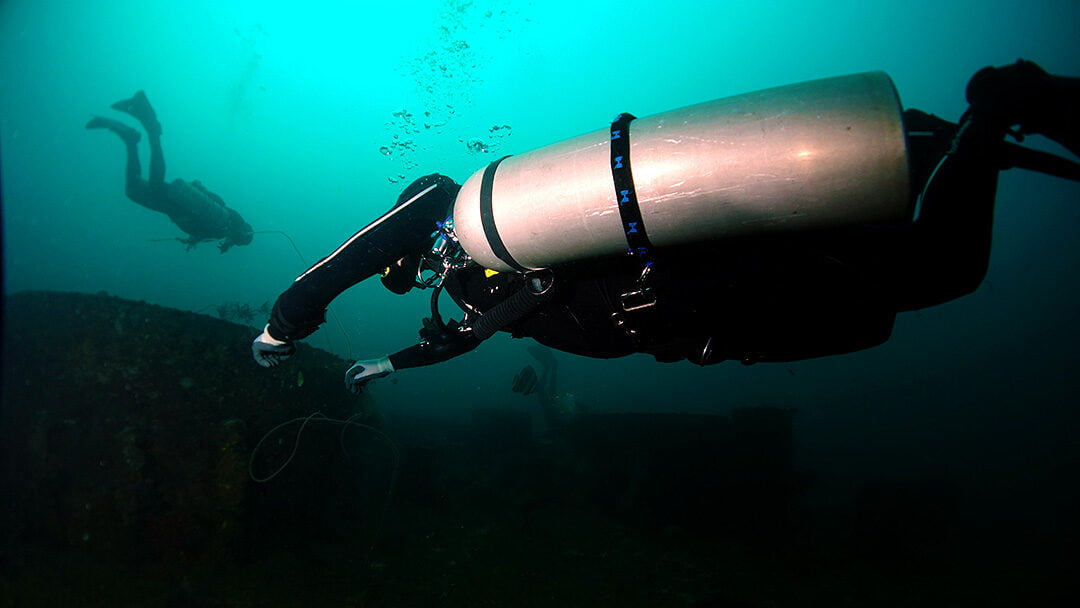
Diving descent speed and narcosis
Narcosis is a sedative-like condition that can affect divers during deeper dives. It’s essential to know that rapid onset narcosis during or after descent is typically caused by carbon dioxide (CO2), not nitrogen. Nitrogen narcosis is much slower in onset and, on recreational-level dives, usually doesn’t have an effect until later in the dive.
What is CO2 narcosis?
CO2 narcosis is a condition caused by too much carbon dioxide in the body. When we breathe in air, our body uses oxygen and produces CO2. Normally, we breathe out carbon dioxide easily through our lungs. However, when we are diving it is possible to retain too much CO2. Excess CO2 in the body reduces our level of consciousness. This, in turn, impairs our mental ability, judgment, and perceptions of the world around us.
How severe is CO2 narcosis?
It’s important to know that CO2 is 25x more narcotic than nitrogen. Even a small amount of hypercapnia will dramatically degrade mental functioning and reduce safety when diving. CO2 narcosis can develop very quickly because the gas is already present in our bodies as a product of metabolism. It does not have to be slowly absorbed over time as nitrogen does.
What are the symptoms of CO2 narcosis?
CO2 narcosis often starts with a feeling of uneasiness and can quickly turn into a panic attack. However, unlike nitrogen narcosis, it doesn’t cause pleasantly euphoric symptoms. A further sign of CO2 narcosis is feeling like we can’t breathe enough air, even when we try to breathe deeply.
Why is CO2 narcosis an issue in scuba diving?
CO2 narcosis is a particular issue in scuba diving because many divers don’t know about it. Most diving courses do not teach about CO2 narcosis and how it differs from nitrogen narcosis. The result of this is that most divers wrongly believe they suffer from nitrogen narcosis when, in reality, CO2 is the culprit.
Knowing the difference between CO2 narcosis and nitrogen narcosis is important. Primarily because CO2 narcosis can be avoided by minimizing exertion, using a slow diving descent speed, and limiting gas density on your dives.
Key points on diving descent speed and narcosis
- Exertion before descent increases CO2 in the body
- Descending increases the pressure of that CO2
- Gas density increases with depth
- Higher gas density reduces the ability to exhale CO2
- CO2 retention (hypercapnia) occurs as a result
- Rapid onset narcosis after descent is caused by CO2, not nitrogen
- CO2 is 25x more narcotic than nitrogen
Setting a personal diving descent speed
While there’s no specific limit on the rate of descent, there are important factors to consider when it comes to your safety and comfort during a dive. By understanding the relationship between diving descent speed and the effects of CO2 narcosis and hypercapnia you can take steps to prevent respiratory issues and ensure a successful dive. Remember to take the time to normalize your respiration before diving and perform a descent stop to maximize CO2 removal before heading to depth.
With this knowledge and these strategies in mind, you can dive with confidence and enjoy all the wonders that the underwater world has to offer.
About The Author

Andy Davis is a RAID, PADI TecRec, ANDI, BSAC, and SSI-qualified independent technical diving instructor who specializes in teaching sidemount, trimix, and advanced wreck diving courses.
Currently residing in Subic Bay, Philippines; he has amassed more than 10,000 open-circuit and CCR dives over three decades of challenging diving across the globe.
Andy has published numerous diving magazine articles and designed advanced certification courses for several dive training agencies, He regularly tests and reviews new dive gear for scuba equipment manufacturers. Andy is currently writing a series of advanced diving books and creating a range of tech diving clothing and accessories.
Prior to becoming a professional technical diving educator in 2006, Andy was a commissioned officer in the Royal Air Force and has served in Iraq, Afghanistan, Belize, and Cyprus.
In 2023, Andy was named in the “Who’s Who of Sidemount” list by GUE InDepth Magazine.
Purchase my exclusive diving ebooks!
Scuba diving descent speed FAQ
There is no recommended limit for descent speed when diving. However, fast descents can exacerbate hypercapnia and CO2 narcosis.
A scuba diver should set a descent rate that they are comfortable with. Slower descents reduce the likelihood of CO2 narcosis and hypercapnia.
Scuba divers descend slowly to reduce the risk of hypercapnia and CO2 narcosis; which can be exacerbated by a swift increase in pressure and breathing gas density.
Fast descents can lead to a rapid spike in CO2 levels within the body. CO2 is 25x more narcotic than nitrogen and very fast in effect.
There is no maximum descent rate for diving. Scuba divers should set their own maximum descent speed to avoid the effects of hypercapnia and CO2 narcosis.
DAN recommends an ideal limit of 5.2g/L, and 6.2g/L as an absolute maximum limit. This equates to 31m (101′) and 38m (125′) if diving with air.
Rapid onset narcosis during or after descent on a scuba dive is usually caused by CO2. Avoid this by not exerting on the surface and reducing your diving descent speed.
Originally posted 2023-03-24 20:14:29.












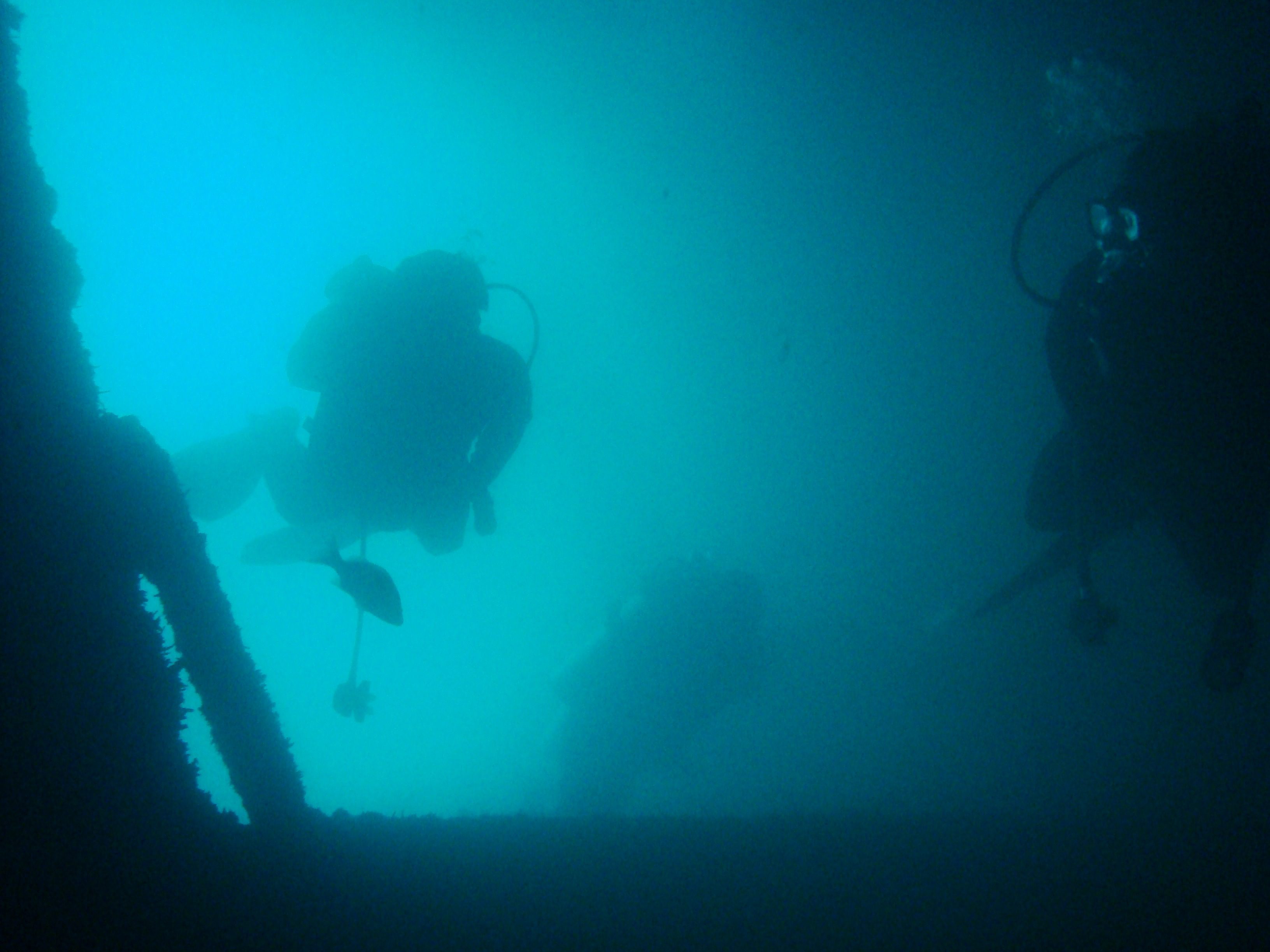
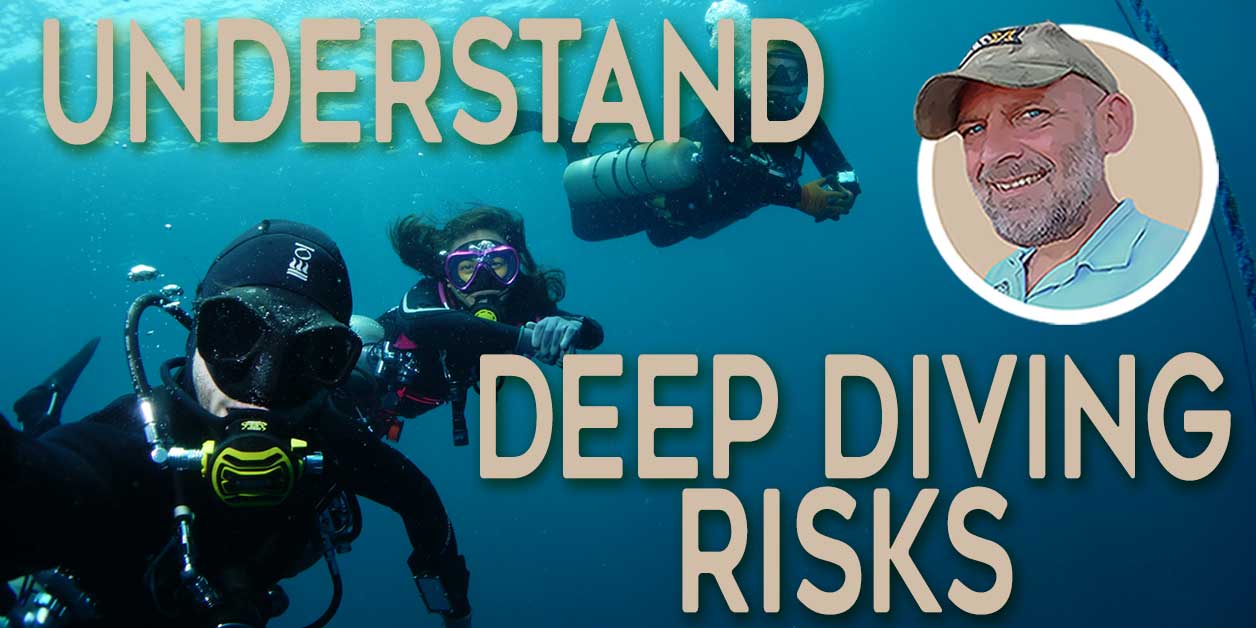
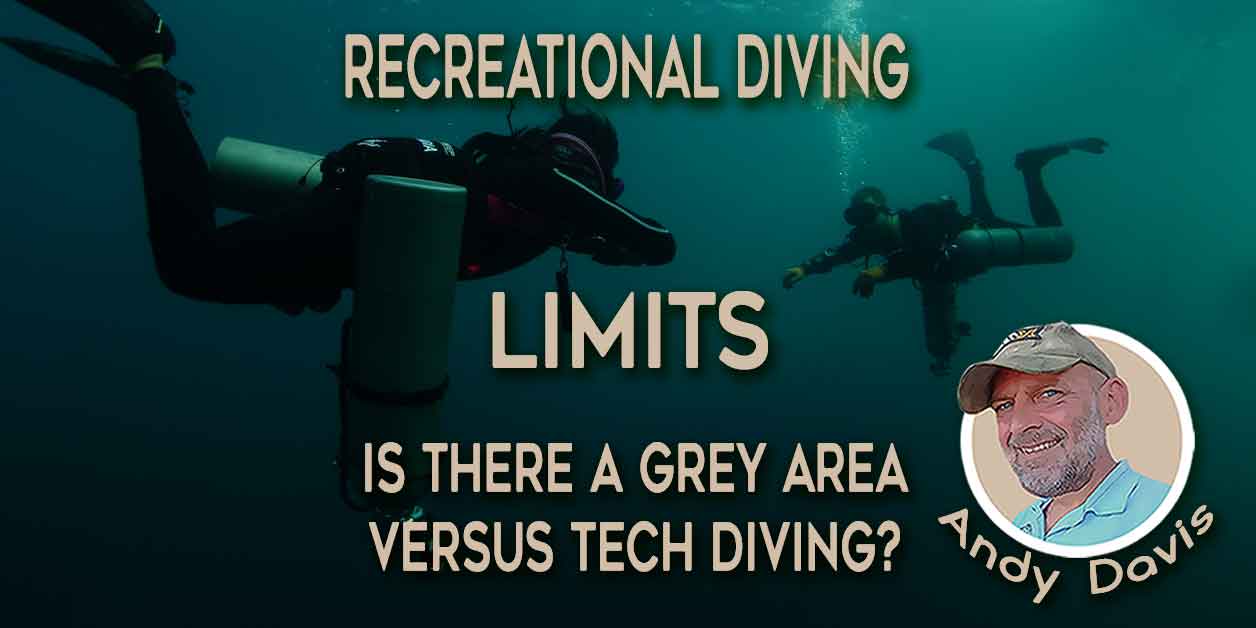
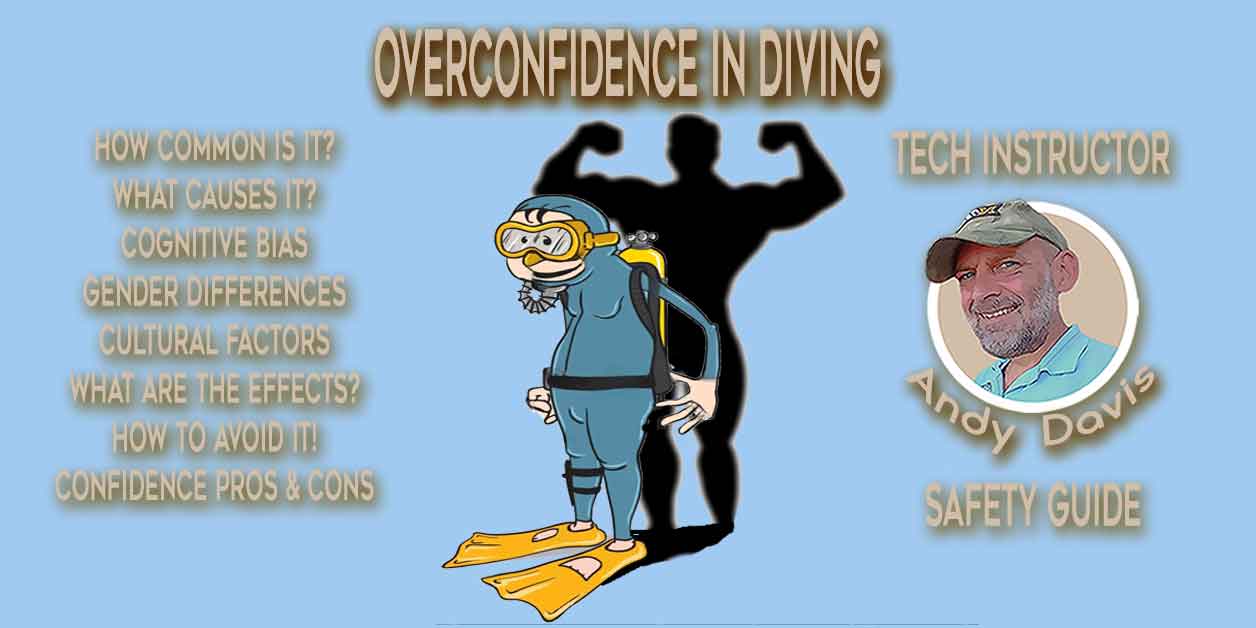
Hi Andy. I just came across your page. I’m very inspired. This is incredibly detailed. You have great knowledge of diving. If you ever come to Komodo National Park, please look us up. We have a dive shop here and it is a great place to see mantas an enjoy the south pacific (If you have not already been here) If you would like you can see our diving page on our website. thank you for sharing your knowledge to educate people. Very impressive sir. Happy Diving – Tis. Our dive page is here is you would like more information. https://www.komodoislandtour.com/scubadive_komodo.html
A very interesting read on a topic I’ve never heard about before and I’m a Divemaster with over 700 warm-water dives. Thank you for this information and I will incorporate it in my guiding dives as we usually have a 10-15 minute surface swim to the drop point and I will be sure no divers are SOB and breathing normally before we descend.
FYI, DAN didn’t create the science. Simon Mitchell et al performed the scientific studies in conjunction with the US Navy Experimental Diving Unit (NEDU). Let’s draw the line of science denial, ok? If you don’t like paying for helium or limiting your dive depths, just admit that. The desire for convenience, ease, and instant gratification is a common human trait, so it is entirely understandable. But we shouldn’t try to lie to ourselves, or others, that it is the best approach.
Most people who believe they’re not sensitive to narcosis haven’t got a clue what it really is. They mistakenly invest in nonsensical analogies that describe it like alcohol inebriation. I am sorry to say that “I am not impaired by narcosis” is usually just an admission of low self-awareness. Expert divers used to deep-air to 70m+ until the 1990s. But it is now 2023; the only people doing that are wilfully bloody ignorant and probably beyond sense or redemption. Freud described this sort of behavior as “reactance“.
Apologies if this sounds harsh, but I write this blog to educate people and promote dive safety. As such, I will not be an enabler for self-deceptions which justify imprudent judgment.
I’d say DAN’s recommendations about gas density have to be taken with a grain of salt. Trying to make them universal(for warm and cold water, for dry and wet suit) they made them too strict. Also mind that DAN is an insurance provider and in their best interests would be to restrict people’s diving limits as much as possible to reduce amount they pay for accidents treatment. Plenty of people dive on air to 55 meters and there are less but who dive to up to 80 meters deep on air (and even more, but that’s already way too risky in my opinion) again on air and had no accidents thruought the years. Some whom I personally know are from remote islands in Phillipines and Indonesia. (Due to price and remoteness neither helium OC or CCR is not available there, sometimes even nitrox is not available so decompression has to be done on air as well). Does it increases the risk? Yes. Is it acceptable – for me yes, I have no problem diving to such depths, I’m not that sensitive to narcosis and high pp02. Btw something which really helps to mitigate the CO2 initial narcosis hit from fast descent is a couple of additional stops at about 15, 30, 40 meters on descent. That how I arrive feeling absolutely not narced at 50-70 meters deep. Falling straight to those depths in it’s turn causes strong narcosis and reduction of mental capabilities which can be present for next 10-15 minutes of the dive.
I’ll admit to an imperfect memory after 15 years outside of the BSAC system. That said, 30m/min is a very high descent rate and necessitates actively finning hard down to depth. Unless grotesquely over-weighted, most divers won’t descend faster than 20m/min through negative buoyancy alone. So, there is a limit, but realistically it is such a fast descent rate that it isn’t really a limit at all; at least, with respect to recreational diving.
I’ve known very experienced technical divers who opt for extremely fast descent rates for deeper hypoxic dives. However, achieving that is the product of immense experience and skill. They aren’t over-exerting and recognize the perils of accelerated respiration. They are also adept in equalizing continually and retaining situational awareness; which are both proficiencies needed for a fast descent.
Although, it is worth noting that faster descent speeds are achieved as depth increases. Descent rate can accelerate in line with a reduction in the rate of pressure differential change. In reality, ascending or descending in scuba diving isn’t a simple matter of constant rate determined by time vs distance. Rather, it is dynamic; a reflection of time versus change in ambient pressure.
As such, I’d consider BSAC’s 30m/min rate applicable as a maximum limit during the deeper portion of descent on a technical dive. But it wouldn’t be a meaningful limit, for instance, on a shallower recreational dive. There’s a huge practical difference between 30m/min descending from the surface to 30m, compared to travelling down 50-80m depth.
Setting a decent rate limit demands specificity. It can’t be a one-size-fits-all solution for every conceivable dive.
I would have thought, that Andy having had BSAC experience, would have beware that BSAC publish a maximum descent rate of 30 metres per minute. However I never knew why, until now. You learn something new every day.